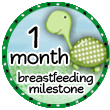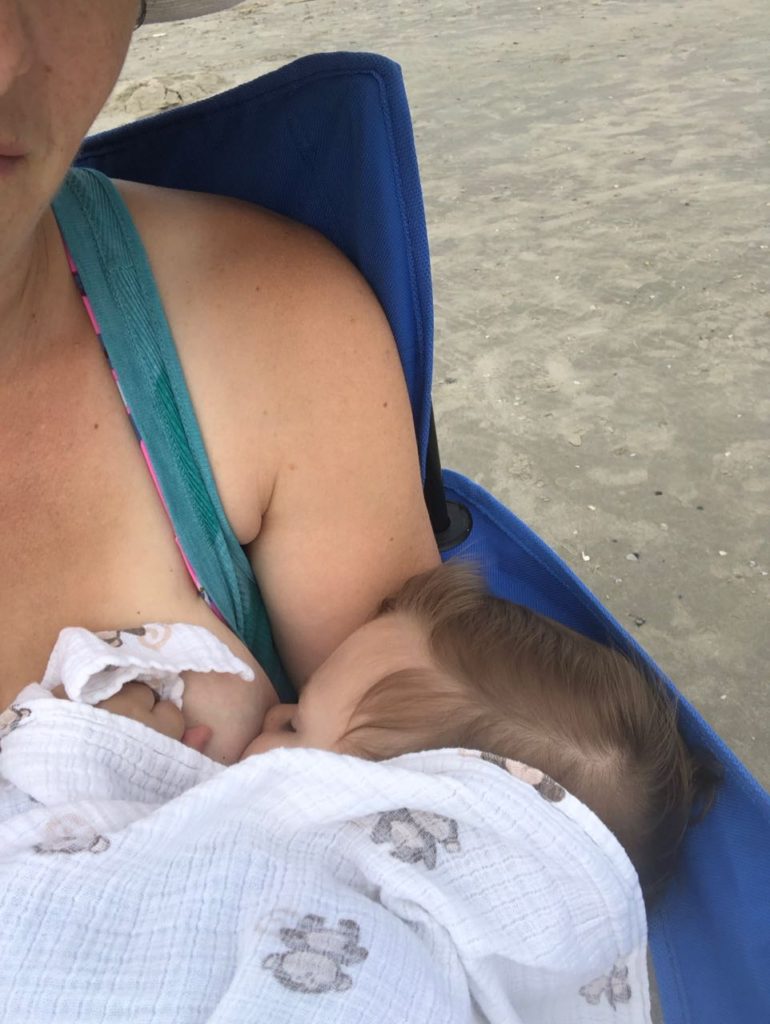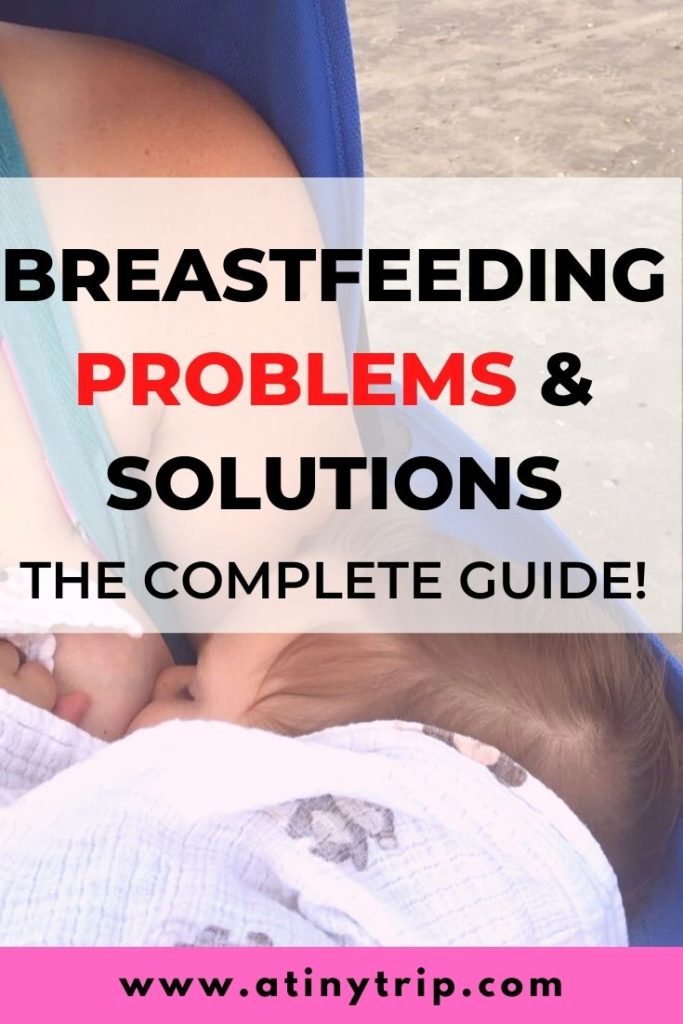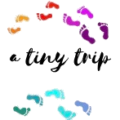
Breastfeeding problems and solutions abound for the first time mom. Make your journey breastfeeding easier and more enjoyable by knowing about common breastfeeding problems, and the solutions.
Breastfeeding is not as straightforward as it may seem, and breastfeeding troubles are fairly common in our generation. We have lost some of the traditional wisdom. However, with over 9 years of breastfeeding behind me, I can share lessons learned!
Save yourself some anxiety and worries. Even difficult circumstances can be overcome, and the result is so worth it! Six weeks of effort will yield months, if not years, of joy.
This post may contain affiliate links. Thank you for supporting our work.
Skip ahead!
What Every Mom Must Know about Breastfeeding
Breastfeeding is the perfect food for babies, and will impart immeasurable benefits in the long run. Therefore, if any trouble arises, prepare yourself to set aside everything else for the first six weeks of your baby’s life.
Why six weeks?
Because it takes 30 days to establish your breastfeeding supply! (Can’t emphasize this enough).
Because your baby will have numerous growth spurts in this time, making latching easier as baby’s mouth gets bigger.
Because around six weeks you may start getting longer stretches of sleep: the fog will clear. You may start getting smiles, and if you have made it this far, it will only get easier from this point onwards.
Breastfeeding Problems are Common
So now let’s parse out some common problems…I will tell you the story of all of my breastfeeding problems and their solutions. As hindsight is 20/20, I will interject with my advice for dealing with each situation (better than I did the first time around)!
Honestly, feeding our first Baby Boy has been absolutely the biggest challenge we have had. So it might be a bit wordy, but here goes nothin’.
Before having Baby Boy, I was not worried about taking care of him. I’d changed a diaper, I’d taken care of children, and I trusted that my instincts would lead me down the right path. The only thing that I was prepared to have a learning curve for, was breastfeeding. I tried to read up a little, but was still way under-prepared for reality.
To be frank, I kind of expected that I would be handed Baby Boy, some nurse would show me how to position him, and it would be smooth sailing from there.
In retrospect, I was pretty naive about the whole thing. Sure it could have been that easy, but now I know that for so many women it is not, at all.
Feeding a Sleepy Baby
It seems that in the hospital, we pretty much did everything wrong. Hospital policy had him put in an incubator for 4 hours right after the birth. I had M go to the nursery and tell them that I would like them not to give the baby formula and please bring him to me as soon as possible to nurse.
After the 4 hours they did indeed bring him to our room, but unbeknownst to us had given him a bottle of glucose water beforehand. From the first moment Baby Boy was put on the breast he just fell asleep.
So a couple of hours later we tried again, but Baby Boy was just too sleepy, and the nurses wanted to give him more glucose water so that’s what we did.
As I mentioned before, Baby Boy was born pretty small and we were all very concerned that he didn’t want to eat. A couple of times a nurse stayed a little longer to show me how to position him, and told us that my nipples “weren’t well formed” and we should buy a nipple extractor and use that (basically a bottle nipple). (Don’t do this!)
So I used that and Baby made a few motions, but the whole time that he was in the hospital, the nurses kept giving him glucose bottles. So throughout this time he was neither awake enough, nor hungry enough to be given a really shot a breastfeeding.
Needless to say, by the time we were going home, I was told to keep using the nipple extractor, and if he doesn’t eat to give him bottles of water until my milk comes in. (Don’t do this either!)
The next couple days were pretty much torture. We were freaked out that he wasn’t eating and my milk hadn’t come in yet. So we were playing around between him sucking at the breast and at the plastic nipple, hoping he would get something, anything. We gave him a few bottles of water and tried to survive his screaming cries.
I should point out that the postpartum hormones, complete sleep deprivation, stress of having houseguests, and just generally trying to figure out how to take care of baby, were not helping.
Tip: Keeping Baby Awake
Don’t do what we did! We were really missing some crucial information. These are ways that you can keep baby awake enough to eat:
- undress baby
- tickle his/her toes
- switch sides between right and left breast (this is also really great for increasing your supply!)
Engorgement
By day 5 my milk had come in and the engorgement was excruciating, I kept trying to put him on the breast with and without the plastic nipple, and eventually just settled into using the plastic nipple every time because I could see that he was getting some milk.
Meanwhile, we kept trying to get a hold of the one lactation consultant in town. Everybody we asked (my doctor, the pediatrician, the nurses from the hospital, and the La Leche League website), kept referring us to the same woman, and we could not get in touch with her.
I knew that I didn’t want to keep using the plastic bottle nipple, but I was so concerned about Baby not eating that I did it anyway; I had to take advantage of every opportunity that he was awake enough to eat.
More tears were shed that week than I can count and every feeding was a nightmare. At the end of day 7, after getting confirmation from the pediatrician that Baby Boy had lost weight, we finally managed to get some help.
Tip: Relieve Engorgement
Having milk come in was certainly a relief, but engorgement if baby is not nursing well can be painful! Here are the best tips to relieve engorgement:
- Nurse baby often!
- Use a breast pump to pump milk (not all the way because then you’ll just make even more milk, but just enough to relieve some of the pressure)
- Look up how to hand express milk
- Hot showers before you nurse and pump
Nipple Confusion
My first meeting with a La Leche League leader was reassuring and overwhelming at the same time. By the time she arrived I was a crying, sleep deprived mess. Grandma tried to sit with us, which only made things worse. So I asked her to go on a walk and call M, who was picking up another set of grandparents, and make sure they would not come while she was here. Finally we could get down to business.
Baby Boy’s refusal to latch at the breast despite repositioning and an experienced hand led us to a devastating (yet not totally surprising) diagnosis: nipple confusion.
Our remedy was going to be a long and hard road ahead. I would pump and then feed the baby with a 1 ml syringe. Every session, I would try to put him at the breast, give a little syringe, and let him suck on my pinky finger to practice the sucking motion.
I would need to try to “trick” him by quickly removing my pinky and trying to put him at the breast. Upon refusal, he would get more syringe, since the most important thing was that he eat.
This charade would go on for an hour at every feeding time for week. Little by little he would be willing to go to the breast for a suck or two, but since we wasn’t latching correctly yet, he wouldn’t really get much milk, and would get frustrated and cry. Did I mention the crying? Every feeding was a cry-fest, and the more he cried the more I wanted to as well. So we had the lactation consultant come again.
This time we had something to work with, because at least he was recognizing the breast as the place to get milk. We did some repositioning, got some more encouragement, and without the imposition of house guests M and I together got to focus on the plan for the next week.
Our session ended with Baby Boy at the breast for about 10 minutes- it felt like forever and was quite wonderful. We were also advised to let him get hungry enough that he would request food and that was one of the key factors we kept in mind the next week.
It was another full week of syringe feeding and “playing around” at the breast, until one day, we had a breakthrough. He stayed on the breast for significantly longer, and within 72 hours was feeding almost solely directly from the breast.
I should note though, that at this point, he needed to be re-latched on multiple times throughout the feedings, but at least things were looking up!
Tips: Prevent Nipple Confusion
Some say that nipple confusion isn’t a real thing….but it is. Of course some babies are easily able to switch between nursing and bottle feeding. But bottle feeding is much easier for babies, so make sure they know how to nurse!
- Do not use a nipple shield unless absolutely necessary!
- Put the baby to breast early and often!
- Bottle feed only once you are confident baby knows how to nurse at the breast.
- Use an SNS system if baby is having trouble getting enough milk.

Blocked Ducts and Low Supply
We had 5 great days of feeding. Baby Boy still needed about an hour and a half to get through a feeding, with multiple re-latchings, but at least he was doing it. It wasn’t perfect but at this point I couldn’t be happier to be done with the syringe and the pumping multiple times a day.
It was the day we had to got to the consulate to get Baby Boy’s American passport in the works. We didn’t have enough time to finish his morning feeding (that was taking well over an hour at this point), so we kept going in the car (not recommended).
Then we had to wait, and wait, and wait. (The customer service is not exactly up to par, but that’s another story for another day). And so Baby Boy got hungry, and I had to feed him there, in the One big waiting hall.
It was pretty much a disaster, not to mention that I was starving (because you’re not allowed to bring food- like I said, that’s another story).
Shortly after we got home, I knew something was wrong. I felt extremely “full” and so decided to pump, when I realized that I wasn’t getting much. This prompted me to take a closer look, and I realized pretty quickly that I had a blocked duct (from some combination of erratic feeding and a bra that was too tight).
Baby Boy refused to feed on that side, so it was back to pumping and syringe feeding. My doc prescribed an anti-inflammatory, and with a few warm showers, massaging of the area and lots of pumping, by the next day it was gone.
But we had another problem: Baby Boy had forgotten how to suck. We were back at square 1, ok maybe square 2.
It took a few more days to get going again because now I was dealing with low supply, a side effect of the medication. This meant that after every single feeding, I would pump to make sure both sides were drained and to get extra stimulation; it was exhausting pumping day and night and I really couldn’t do anything but feed Baby Boy (not to mention sore nipples from all that time).
What really helped though, was watching the Jack Newman videos and recognizing when Baby Boy was getting milk, so that I could help him re-create his positioning. Once he was back on track, my supply re-stabalized and we officially hit a serious milestone. It was a really big deal.

Tips: Increase Your Milk Supply
The best way to increase your milk supply is by feeding your baby, and then feeding them again! Breast milk follows supply and demand, the more milk is removed the more milk will be made.
- Switch nursing- let your baby feed on the right and when they slow down, switch to the left, then back to the right and back to the left. Repeat several times. Especially when done in the evening time, this is the best way to increase supply!
- Eat lots of healthy food and drink lots of water. An especially good option is eating a whole avocado!
- Oatmeal is an often cited galactogogues (milk increasing food)- yes it works, but best if combined with above healthy fat and water (add butter)!
- Mother’s Milk Tea– I don’t have personal experience, but this tea combines a bunch of galactogogues such as fenugreek and this is hands down the best brand of tea. 🙂
Mastitis
I guess the title says it all. We had a GREAT week. Baby Boy was eating more or less on a predictable schedule, latching on was taking less and less tries, and I was walking around the house while nursing to keep Baby Boy alert and drinking.
I had re-embraced the nursing bra after walking around bra-less for the last few weeks.
One day Baby Boy got a rash, runny nose and (TMI alert) green stool. I decided to check if it was a food allergy by eliminating several things from my diet. But no matter, at least he was feeding and I was walking on air. And then my throat started to hurt.
Within a few hours I had chills and a fever of 103. Consequently, I looked carefully and saw that my breast was inflamed, but this was no blocked duct, it was full-on mastitis.
Murphy’s law being what it is, this was on Sunday, the day before M’s biggest exam of the semester. So I took tylenol and took care of Baby Boy, while shivering in bed. It was the WORST feeling I can describe: feeling helpless and trying to take care of a fussy baby on my own. (We now know his symptoms were most probably a virus, but using that bulb to suck out his snot at 3 am, while running a fever was unpleasant to say the least).
The following day we made it to the doctor and got the diagnosis. He said to stop breastfeeding immediately, pump to get out the infection, and gave me a cocktail of antibiotics. He offered some medicine to help me dry up my milk with the rational that I was likely to get re-infected, since the infection most likely came from Baby Boy’s mouth. (No, no, no- bad advice!!!)
I was crushed and asked about expressing milk, to which I was told I could keep on giving Baby Boy breast milk only by pumping and using a bottle, starting after I finished the antibiotics.
The next 3 days were horrible. I was still not feeling well and frustrated at having to pump and dump. Baby Boy was upset because he couldn’t comfort feed. And M was going at 90 miles an hour to take care of us while doing overtime in the school clinic.
Tip: Clear Blocked Ducts and Avoid Mastitis
If there’s any lesson I must share it is this: at any sign of a block duct you must nurse, pump and nurse some more.
- First of all try to avoid blocked ducts by wearing loose fitting clothing, or anything that might put pressure on the breast unnecessarily.
- If you are prone to blocked ducts you can take a supplement of lecithin. However my whole foods recommendation is to eat avocado! It has the same effect.
- Don’t forget to drink lots of water to help keep the milk flowing.
- The best way to clear a blocked duct is by positioning baby so that baby’s chin is where the block is. This may mean putting baby on the bed and literally dangling your breast to get to the correct angle.
- The next best way to clear a blocked duct is to apply heat to the spot with a warm shower or something like this, and then immediately pump.
- Prioritize clearing that duct to prevent mastitis because everything else can wait! Rest, let your body heal, and know that this is good training for baby’s immune system.
Continuing to Breastfeed Despite Problems
Meanwhile, we were both researching the medications I was taking and looking for a second opinion regarding continuing breastfeeding. M check ed medical references (some said ok, others said no) and asked a doctor friend for a second opinion resulting in a “probably better not but we don’t know”. I consulted Dr. Hale’s book (Medications and Mother’s Milk) resulting in a “probably ok but not sure”.
Then I emailed Dr. Jack Newman resulting in “definitely continue” (with the explanation that the tiny percentage of antibiotic that gets into the breastmilk is still better than formula).
Finally we asked the pediatrician who said “probably ok”. Plus the knowledge that antibiotics prescribed to children are of a much higher dose than what gets into the milk and those are considered safe. And that’s what decided it for me- back to breastfeeding it was.
It definitely took several days for Baby Boy to get back in the groove after being exclusively bottle-fed. We tried the boppy again; we tried the cross-cradle position; we tried the walking around.
He kept re-adjusting his latch to one that was way too small, but is getting better every day. Unfortunately, I depleted my entire freezer stash during all those feedings, and so I will have to start pumping a little more to re-build it for another rainy day.

Breastfeeding Has a Learning Curve
I learned a lot from the experience though: about the composition of breast milk, about how medications are absorbed into the body (more or less), about holding my ground and not taking doctors’ opinions as pure fact.
As this saga shows, sometimes our limits are tested over and over and now that Baby Boy is finally showing some fat rolls I can be proud of myself for sticking to my gut instinct and getting this breastfeeding thing to work.
I am not disillusioned that this is the last of our problems. His latch is still not perfect. Nursing in public is still a major deterrent of going out for extended periods of time for me. And I am most definitely paranoid about “draining” the breasts at every meal.
I still have the occasional thought that I wish he was 6 months old so that I could start weaning and not feel like a cow much of the day. But I have hope that we can make it.
Breastfeeding Journey
Update: and make it we did! My first baby boy was nursed through my next pregnancy!
And my second baby boy was so much easier to nurse, that we were tandem nursing both boys following my VBAC.
My third and fourth babies also nursed well! Despite having a few blocked ducts with each baby we continued down this road. And had a couple more breastfeeding problems!
Cracked Nipples
My third baby, was born hungry. She just wanted to suck non stop and was quite frantic until my milk came in on the second day! In that one day she managed to seriously crack my nipples and actually draw blood.
Tips for Cracked Nipples:
With cracked nipples you have a few options, but know that while they may hurt temporarily, with a good latch this will resolve itself. Here’s what to do in the meantime:
- Confirm a good latch, by meeting with a lactation consultant! You may need to check for a tongue tie.
- Apply breastmilk to nipples after every feed and let dry on the nipple. (This is the best medicine).
- You can also try applying olive oil, coconut oil or lanolin to your nipples.
- If nursing is too painful, consider pumping for a bit.
- The best healing ointment is All Purpose Nipple Ointment which can be made at a compounding pharmacy.
Thrush
As if these weren’t enough problems…baby girl’s tongue started turning very white! I was afraid we were going to have to deal with thrush, which is a yeast infection of the mouth. Once that gets going baby reinfects mom, and mom reinfects baby and it is a nightmare to deal with.
Thankfully, we were able to pop into the pediatrician and it was not thrush. It turns out it was just milk that had accumulated on her tongue! The way to know, is if you can scrape off some of it, then it’s just milk.
Tips: Thrush
- If you do have to deal with thrush, you will want to put a touch of apple cider vinegar on mom’s nipple before every feeding.
- Treating thrush is usually done with gentian violet and can get very messy as it turns everything purple.
Alright, so now you’re thinking, what other problems could she possibly have? And I thought the same…until baby number four came around.
Bleb
A bleb is a milk blister. You will see a little white blister on the nipple or areola. Much like a blocked duct, this is when there is a block closer to the surface and some milk gets accumulated behind the skin. It will be slightly painful right on the spot.
This of course happened when we were moving! Stress + tight fitting clothes= a recipe for a problem. Seriously!
Thankfully treating a bleb is quite simple. It is the same as treating a blocked duct: warmth and more nursing until it is released.
Tips: Treating a Milk Blister, Bleb
- Apply moist warm heat. My favorite is a hot shower, where you can rub at the skin a little bit.
- Nurse or pump. Rinse and repeat.
- The blister may take a few days to dissolve. Patience.
Breastfeeding Challenges
So there you have it! A huge number of breastfeeding challenges in the past ten years. HOWEVER, it has all been worth it!
Deep down I know that breast is best, not as a slogan, but as the food that mother nature intended for our babies. I also believe that the vast majority of women can make breastfeeding a reality for their children with the right support. And thankfully there are wonderful women that also donate breast milk for babies!
Have you had any breastfeeding challenges? What have you done to overcome them?




